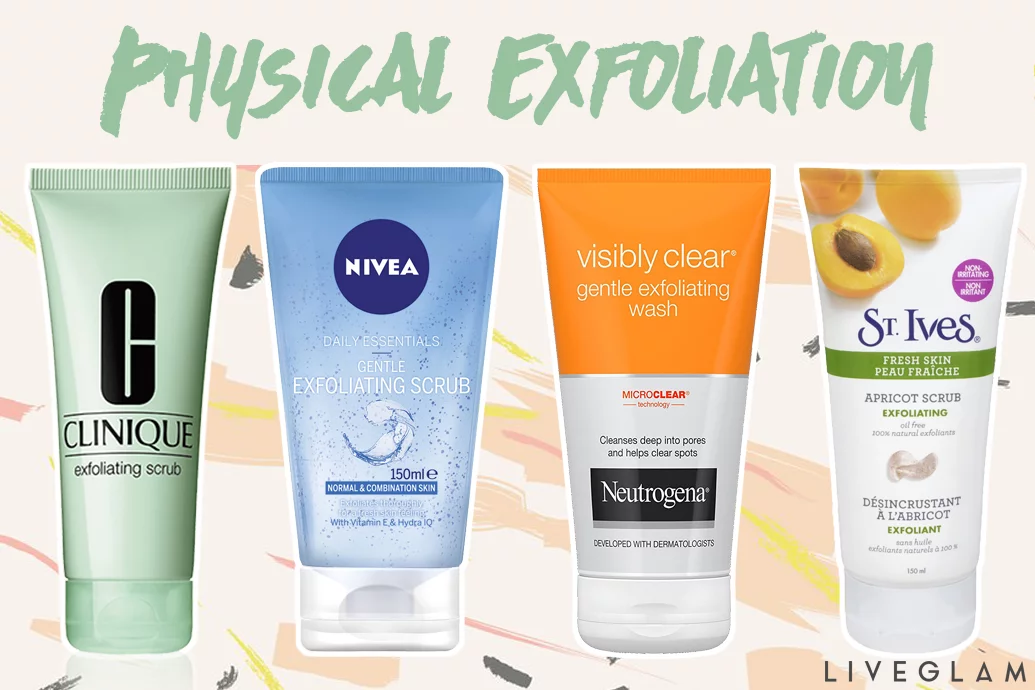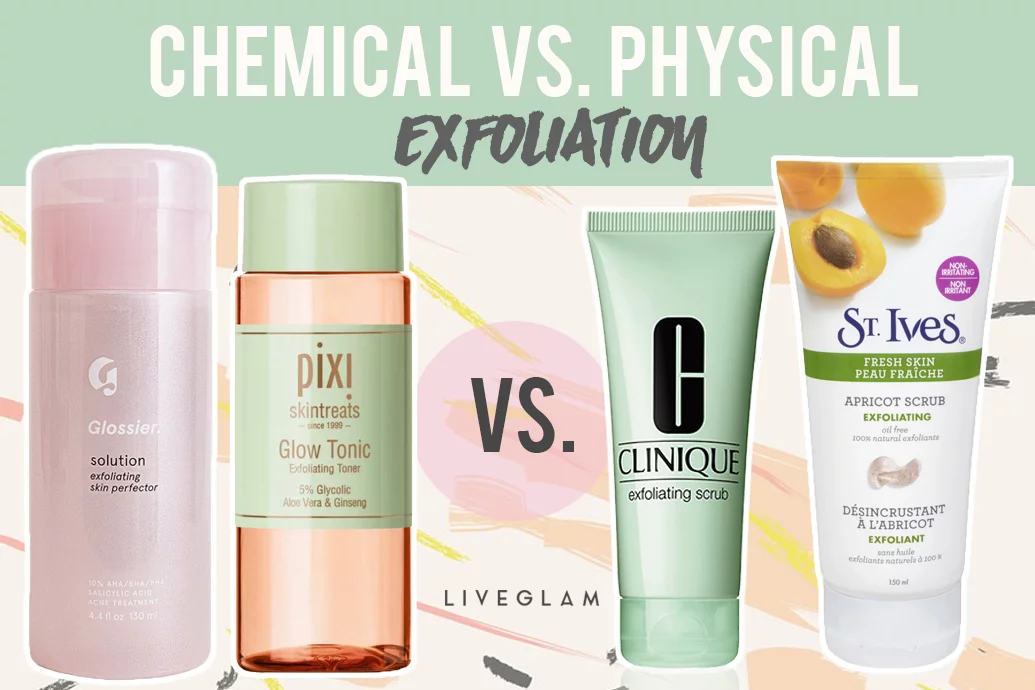Exfoliation has been a well-established step in any good skincare routines for a long time now, it’s not a new trend at all. But gone are the days when the only option was the St Ives scrub which we’re pretty sure did more damage than good!
Exfoliators now come in all sorts of shapes and sizes, from tubes of grainy salt-infused creams to colorless liquids which look and feel like water. The main difference here is chemical versus physical and with the former becoming increasingly popular, is there still room for the good old-fashioned face scrub?
Finding out the difference between chemical exfoliators and physical scrubs is the only way to decide which is best for your skin type. Either way, incorporating at least one of them into your skincare routine will leave you with a clearer, smoother, and brighter complexion.
What does exfoliating actually do?
Exfoliating is beneficial for all skin types as it removes dead skin cells from your skin’s outer layer and encourages new and fresh skin cells to form. Dead skin cells can cause bacteria and clogged skin and they may leave you with a dry and flaky finish to your complexion. New skin cells are fresh so are free from any nasties and will leave your skin feeling smoother and softer.
Whilst this process does happen naturally, exfoliating speeds the process up which is particularly beneficial for ageing skin as the natural removal of dead skin cells slows as you age.
What is Physical Exfoliation?

For years, physical exfoliation was the only exfoliator we had to work with and it involves physical components, such as beads or grains, actively rubbing against the skin to dislodge old skin cells and brush them away.
Some people say that physical exfoliation is the best way to really scrub your face clean and after you use one, there is no denying it, your skin feels the softest it has ever felt! The circulation can also give cheeks a youthful rosy glow and there will be instant gratification with an improve skin texture and feel.
On the downside, physical exfoliants can be too harsh for some skin types. Some scrubs can have incredibly large grains or beads which actually irritate the skin and can cause redness. They can even tear the skin leaving it prone to infection which is not going to leave you with a healthy complexion at all! Alternatively, some scrubs with smaller grains or beads just may not be very effective, so finding the balance is a tricky one.
What is Chemical Exfoliation?

Chemical exfoliation is much newer on the beauty market and may sound a little daunting, but actually, chemical exfoliators are often more gentle for sensitive skin. There are two main types of chemical exfoliators, AHAs and BHAs. AHAs work by melting the glue which attaches the dead skin cells to the outer layer of the skin whilst BHAs are oil soluble ingredients which go deeper into the skin and pores for a thorough cleanse.
AHAs are perfect for sensitive skin as they don’t cause irritation like a physical scrub and BHAs are particularly good for those with acne-prone and oily complexions as they can clean out pores and remove bacteria.
Chemical exfoliation not only reduces the risk of over-scrubbing but they can penetrate the skin deeper than a physical exfoliant for more permanent and long-lasting results. Whilst you won’t get as much instant gratification you will notice the difference after a month or two of regular use.
Should you use a physical or chemical exfoliator?
It really depends what you want from your exfoliator. If you want rosy red cheeks, super smooth skin and that instant cleansed feeling, you may want to stick with a physical exfoliant. Whereas, if you want a deeper penetration or have sensitive skin, a chemical exfoliant is a better choice for you.
Do you prefer a chemical exfoliant or a physical one?

